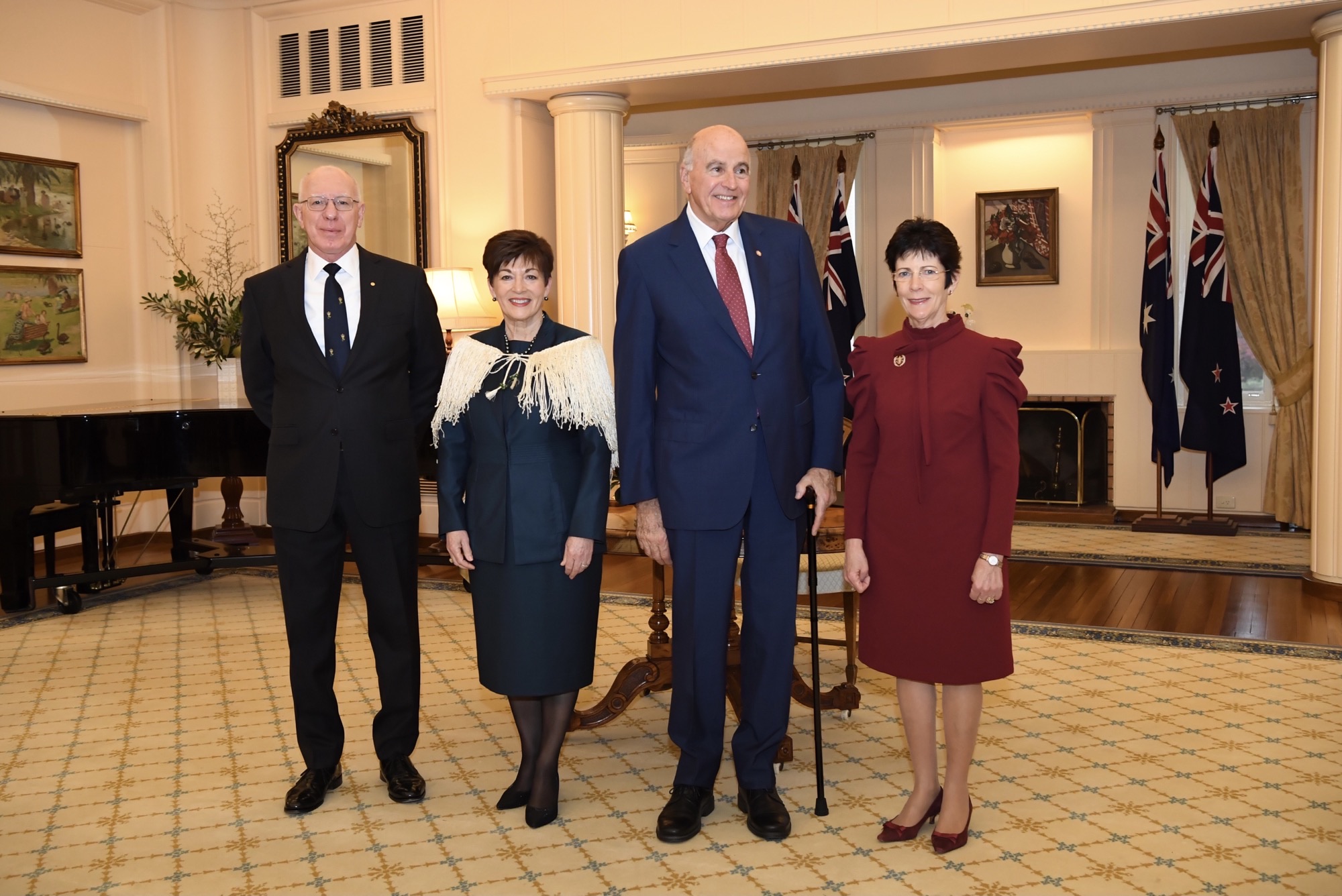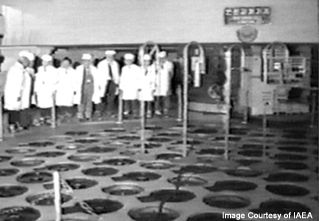|
Ch'ŏngnyŏn P'arwŏn Line
The Ch'ŏngnyŏn P'arwŏn Line is a non-electrified standard-gauge secondary railway line of the Korean State Railway in North P'yŏngan Province, North Korea, running from Kujang on the Manp'o and P'yŏngdŏk Lines to Kusŏng on the P'yŏngbuk Line. This line serves the Nyŏngbyŏn Nuclear Scientific Research Centre via the Pun'gang Line, which joins the mainline at P'arwŏn. History A line from Tŏkch'ŏn to P'arwŏn had been planned already in the 1940s by the West Chosen Central Railway, after receiving permission from the Railway Bureau of the Government-General of Korea in 1940 to extend its line beyond Tŏkch'ŏn.朝鮮総督府官報 (The Public Journal of the Governor-General of Korea), Shōwa No. 4021, 18 June 1940 (in Japanese) However, by the end of the war, construction had been completed only as far as Changsangri (today on the Changsang Line), although work had begun on the line towards Kujang; it was only in 1953 after the end of the Korean War , date ... [...More Info...] [...Related Items...] OR: [Wikipedia] [Google] [Baidu] |
Passenger Rail Terminology
Various terms are used for passenger railway lines and equipment; the usage of these terms differs substantially between areas: Rapid transit A rapid transit system is an electric railway characterized by high speed (~) and rapid acceleration. It uses passenger railcars operating singly or in multiple unit trains on fixed rails. It operates on separate rights-of-way from which all other vehicular and foot traffic are excluded (i.e. is fully grade-separated from other traffic). It uses sophisticated signaling systems, and high platform loading. Originally, the term ''rapid transit'' was used in the 1800s to describe new forms of quick urban public transportation that had a right-of-way separated from street traffic. This set rapid transit apart from horsecars, trams, streetcars, omnibuses, and other forms of public transport. A variant of the term, ''mass rapid transit (MRT)'', is also used for metro systems in Southeast Asia and Taiwan. Though the term was almost alway ... [...More Info...] [...Related Items...] OR: [Wikipedia] [Google] [Baidu] |
Changsang Line
The Changsang Line is an electrified freight-only railway line of the Korean State Railway in South P'yŏngan Province, North Korea, running from Hyangjang on the P'yŏngdŏk Line to Changsang.Kokubu, Hayato, 将軍様の鉄道 (Shōgun-sama no Tetsudō) History On 21 June 1940, the West Chosen Central Railway, which since 1939 had been operating a line between Sŭnghori and P'yŏngnam Kangdong, (The Public Journal of the Governor-General of Korea), Shōwa No. 3851, 20 November 1939 (in Japanese) received approval from the Railway Bureau of the Government-General of Korea to build a line to the Changsang coal fields via Tŏkch'ŏn; (The Public Journal of the Governor-General of Korea), Shōwa No. 4021, 18 June 1940 (in Japanese) the Chosen Anthracite Company had opened mines around Changsang and Tŏkch'ŏn in 1938 From Tŏkch'ŏn, which it had reached in the summer of 1945, the West Chosen Central Railway planned its Tŏkpal Line () line to run from Tŏkch'ŏn to Kuja ... [...More Info...] [...Related Items...] OR: [Wikipedia] [Google] [Baidu] |
Governor-General Of Korea
Governor-general (plural ''governors-general''), or governor general (plural ''governors general''), is the title of an office-holder. In the context of governors-general and former British colonies, governors-general are appointed as viceroy to represent the monarch of a personal union in any sovereign state over which the monarch does not normally reign in person. Governors-general have also previously been appointed in respect of major colonial states or other territories held by either a monarchy or republic, such as Japan in Korea and France in Indochina. Current uses In modern usage, in the context of governor-generals and former British colonies, the term ''governor-general'' originated in those British colonies that became self-governing within the British Empire. Before World War I, the title was used only in federated colonies in which its constituents had had ''governors'' prior to federating, namely Canada, Australia, and the Union of South Africa. In these cases, ... [...More Info...] [...Related Items...] OR: [Wikipedia] [Google] [Baidu] |
Chosen Government Railway
Chosen or The Chosen may refer to: The chosen ones *Chosen people, people who believe they have been chosen by a higher power to do a certain thing including **Jews as the chosen people Books *The Chosen (Potok novel), ''The Chosen'' (Potok novel), a 1967 novel by Chaim Potok * ''The Chosen'', a 1997 novel by L. J. Smith (author), L. J. Smith *The Chosen (Pinto novel), ''The Chosen'' (Pinto novel), a 1999 novel by Ricardo Pinto *The Chosen (Karabel book), ''The Chosen'' (Karabel book), a book by Jerome Karabel *Chosen (Dekker novel), ''Chosen'' (Dekker novel), a 2007 novel by Ted Dekker *Chosen (Cast novel), ''Chosen'' (Cast novel), a novel in the ''House of Night'' fantasy series Film and television *''Holocaust 2000'', also released as ''The Chosen'', a 1977 horror film starring Kirk Douglas *The Chosen (1981 film), ''The Chosen'' (1981 film), a film based on Potok's novel *The Chosen (2015 film), ''The Chosen'' (2015 film), a film starring YouTube personality Kian Lawley *The C ... [...More Info...] [...Related Items...] OR: [Wikipedia] [Google] [Baidu] |
West Chosen Central Railway
The West Chōsen Central Railway (Japanese: 西鮮中央鉄道, ''Sōsen Chūō Tetsudō''; Korean: 서선중앙철도, ''Seoseon Jung'ang Cheoldo''), was a privately owned railway company in Japanese-occupied Korea. History The West Chōsen Central Railway opened its lines from Seunghori to Jangsang in several staged between 1939 and 1945. The first section, from Seunghori to Seongneum, was opened on 29 June 1939,朝鮮総督府官報 (The Public Journal of the Governor-General of Korea), Shōwa No. 3736, 5 July 1939 (in Japanese) followed five months later by an extension to Pyeongnam Gangdong.朝鮮総督府官報 (The Public Journal of the Governor-General of Korea), Shōwa No. 3851, 20 November 1939 (in Japanese) On 1 October 1941 a second line was opened, isolated from the first, made up of a mainline running from Sinseongcheon to Bukchang with a branchline, the Jaedong Line, from Gujeong to Jaedong.朝鮮総督府官報 (The Public Journal of the Governor-Gen ... [...More Info...] [...Related Items...] OR: [Wikipedia] [Google] [Baidu] |
Tokchon Station
Tŏkch'ŏn () is a ''si'', or city, in northern South P'yŏngan province, North Korea. It is bordered by Nyŏngwŏn and Maengsan to the east, Kujang county in North P'yŏngan province to the north, Kaech'ŏn to the west and Pukch'ang to the south. It was known as Tokugawa during Japanese rule. History On April 28, 2017, a Hwasong-12 intermediate-range ballistic missile launched from near Pukchang Airport reportedly crashed into Ch'ŏngsin-dong, Tokchon, damaging several structures in the city. Administrative divisions Tŏkch'ŏn-si is divided into 22 ''tong'' (neighbourhoods) and 10 ''ri'' (villages): Economy The Sŭngri Motor Plant (with associated workshops) has been one of the few domestic sources of both low-cost replicas of foreign passenger cars and military-service trucks in North Korea since it was established in 1950, and developed through the massive militarization campaigns of Kim Il-sung in the 1970s and 80s. However, the total depletion of foreign credit by ... [...More Info...] [...Related Items...] OR: [Wikipedia] [Google] [Baidu] |
Yongbyon Nuclear Scientific Research Center
The Nyongbyon Nuclear Scientific Research Center is North Korea's major nuclear facility, operating its first nuclear reactors. It is located in Nyongbyon County in North Pyongan Province, about 100 km north of Pyongyang. The center produced the fissile material for North Korea's six nuclear weapon tests from 2006 to 2017, and since 2009 is developing indigenous light water reactor nuclear power station technology. Facilities The major installations include all aspects of a Magnox nuclear reactor fuel cycle, based on the use of natural uranium fuel: * a fuel fabrication plant, * a 5 MWe experimental reactor producing power and district heating, * a short-term spent fuel storage facility, * a fuel reprocessing facility that recovers uranium and plutonium from spent fuel using the PUREX process. Magnox spent fuel is not designed for long-term storage as both the casing and uranium metal core react with water; it is designed to be reprocessed within a few years of rem ... [...More Info...] [...Related Items...] OR: [Wikipedia] [Google] [Baidu] |
North Korea
North Korea, officially the Democratic People's Republic of Korea (DPRK), is a country in East Asia. It constitutes the northern half of the Korea, Korean Peninsula and shares borders with China and Russia to the north, at the Yalu River, Yalu (Amnok) and Tumen River, Tumen rivers, and South Korea to the south at the Korean Demilitarized Zone. North Korea's border with South Korea is a disputed border as both countries claim the entirety of the Korean Peninsula. The country's western border is formed by the Yellow Sea, while its eastern border is defined by the Sea of Japan. North Korea, like South Korea, its southern counterpart, claims to be the legitimate government of the entire peninsula and List of islands of North Korea, adjacent islands. Pyongyang is the capital and largest city. In 1910, Korean Empire, Korea was Korea under Japanese rule, annexed by the Empire of Japan. In 1945, after the Surrender of Japan, Japanese surrender at the End of World War II in Asia, end ... [...More Info...] [...Related Items...] OR: [Wikipedia] [Google] [Baidu] |
Railway
Rail transport (also known as train transport) is a means of transport that transfers passengers and goods on wheeled vehicles running on rails, which are incorporated in tracks. In contrast to road transport, where the vehicles run on a prepared flat surface, rail vehicles (rolling stock) are directionally guided by the tracks on which they run. Tracks usually consist of steel rails, installed on sleepers (ties) set in ballast, on which the rolling stock, usually fitted with metal wheels, moves. Other variations are also possible, such as "slab track", in which the rails are fastened to a concrete foundation resting on a prepared subsurface. Rolling stock in a rail transport system generally encounters lower frictional resistance than rubber-tyred road vehicles, so passenger and freight cars (carriages and wagons) can be coupled into longer trains. The operation is carried out by a railway company, providing transport between train stations or freight customer facilit ... [...More Info...] [...Related Items...] OR: [Wikipedia] [Google] [Baidu] |



